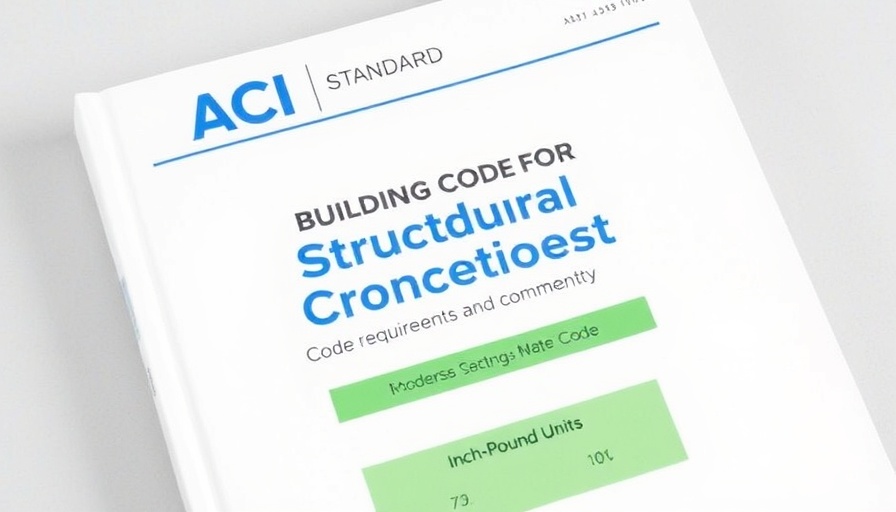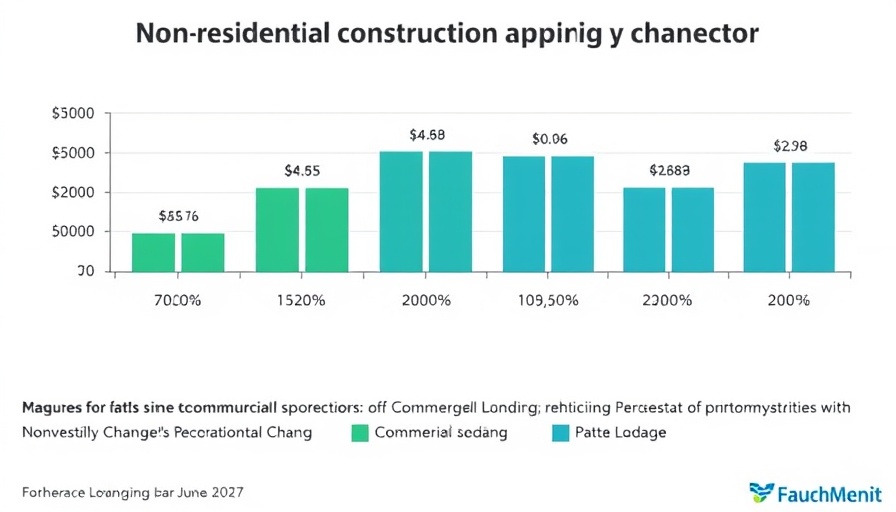
The Green Revolution in Concrete: A Game Changer for the Industry
The recent update to ACI 318-25, the cornerstone structural concrete code, is set to usher in a new era of sustainable building practices. This code revision not only emphasizes sustainability but also introduces performance-based approaches to wind design, reflecting a broader commitment to environmentally friendly construction methods. As the construction industry grapples with the imperatives of climate change, adhering to these updated guidelines can profoundly impact efficiency, cost management, and overall project quality.
A Deeper Dive into Sustainability Metrics
Incorporating sustainability into concrete design principles is no longer an afterthought; it’s a necessity. The ACI 318-25 outlines specific sustainability measures, such as life cycle assessments and resource efficiency metrics, that provide a framework for construction professionals. A pivotal aspect of this is understanding how the materials we use—like recycled aggregates and sustainable cement alternatives—can significantly reduce environmental footprints.
Wind Design: Planning for the Future
The push towards performance-based wind design is another noteworthy facet of the ACI 318-25 update. This approach requires a thorough understanding of how structures behave under wind loads, ensuring safety, durability, and resilience. By moving away from the traditional prescriptive codes to a performance-oriented model, engineers can design buildings that not only withstand stressors but also minimize material usage without sacrificing integrity.
The Business Case for Compliance
For clients of commercial construction companies, adhering to ACI 318-25 isn’t just about following regulations; it’s about gaining a competitive edge. Sustainable practices often lead to significant cost savings through reduced energy consumption and lower material costs. Furthermore, buildings constructed under these updated guidelines can have enhanced marketability due to growing consumer preference for sustainable options.
Future Predictions in Construction Technology
The melding of technology with traditional construction methods is anticipated to grow. Innovations such as digital twin technology and automated project management tools will become indispensable for compliance with updated codes like ACI 318-25. By harnessing data analytics and visualization, construction firms can optimize their processes, ensuring that projects are efficient and sustainable.
Implementing the New Code: Steps Forward
To seamlessly integrate the ACI 318-25 updates into ongoing projects, construction companies should consider establishing dedicated training programs. Equipping teams with the necessary skills to interpret and implement these new guidelines can vastly improve project outcomes. Moreover, collaboration with sustainability experts can further enhance understanding and application, ensuring that companies remain at the forefront of modern construction practices.
Inspiration from the Industry
It’s worth remembering that the construction sector has long been a beacon of innovation. As we look toward a sustainable future, the moves encapsulated in the ACI 318-25 act as a catalyst for transformation. Engaging with this evolving landscape not only fortifies the future of building but also plays a crucial role in addressing global environmental challenges.
The updated ACI guidelines represent an opportunity. As clients of commercial construction companies, understanding and embracing these changes can lead to improved project outcomes, sustainability, and market relevance. Let’s talk about how to implement these strategies in your upcoming projects.
 Add Row
Add Row  Add
Add 




Write A Comment